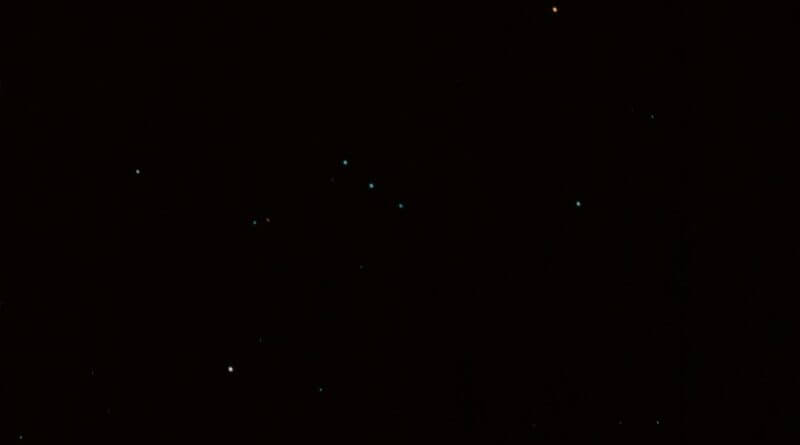Space Is The Place: The Night Sky Over Belper, March 2023
The Night Sky Over Belper, March 2023: Mars and Venus, Star Count Survey, the Vernal Equinox, British Summer Time begins.
The Vernal Equinox: March 20th
The Vernal Equinox takes place on Monday 20th of March. This is when day and night are of almost equal length. The Vernal Equinox is regarded as the start of astronomical spring in the northern hemisphere, although meteorologists consider March the 1st as the relevant date. The Vernal Equinox is also the time of the year when the Sun will rise due east and set due west (thus determining these cardinal points of the compass in your location).
British Summer Time: 26th March
British Summer Time starts on Sunday the 26th of March and clocks go forward an hour in the UK. Most astronomy sites record times in UTC (Co-ordinated Universal Time) equivalent to Greenwich Mean Time (GMT). UK Astronomers have to be mindful that, after the 26th, they will need to add an hour where times have not been converted: BST = UTC + 1.
CPRE Star Count Survey – Notes
The CPRE star count survey took place between the 26th of February and the 6th of March. People were asked to count how many stars they could see in the constellation of Orion (see headline image courtesy of NASA Images).
As always, cloudy nights got in the way of observation for most nights. However, when I was able to view Orion I was able to count 12 stars (the CPRE regards anything below 10 stars as severe light pollution and gives the optimum result as 30 stars – a truly dark site).
My garden is surrounded by other houses and the results for 2023 are consistent with previous year’s results. In such circumstances, larger telescopes do not necessarily solve the problem of light pollution – if you are looking for hazy objects (galaxies, comets, etc) it is far better to have portable equipment to enable viewing from a dark site.
Results of this year’s survey will be used to develop the CPRE’s Interactive Map of light pollution and dark sites in England. See the webpage here: Night Blight.
To find out more about the CPRE’s Dark Skies Campaign, go to the relevant webpage here: CPRE Star Count.
The Moon
Look out for a thin crescent Moon in the twilight hours on the 22nd of March. Look for it in the south-west. There will also be a crescent moon on the following nights.
The crescent Moon forms a nice pairing with Venus on the nights of the 23rd and the 24th.
The Planets
Mars is currently visible high in the evening sky in the southern part of the sky. It is worth looking at the planet through binoculars – which will reveal the redness of its disc. As the month progresses Mars will become less bright – but still distinct. On the 28th of March, just after sunset, Mars will appear to lie just below the quarter Moon.
Venus shines as the Evening Star in the south–west in the early evening. It is bright and unmistakable and will rise higher in the sky as the month progresses.
The International Space Station
The International Space Station is one of the brightest objects in the night sky. It is not hard to spot and flies-past periodically throughout the year. Fly-pasts tend to swing from PM to AM. Typically it will be in the sky for up to four minutes at a time – slowly moving across the sky, at first bright and then fading as it moves away from us and over the horizon.
ISS is tracked by NASA’s spot the station website. Spot the Station gives the time, duration and direction of sightings. It is very accurate and you will notice that the the space station always arrives on time, best to be in position around 5 minutes before the predicted sighting – otherwise you may miss it. In addition to the Spot the Station site you can also sign up to the Alerts Site – which gives advance warning of the most prominent sightings.

